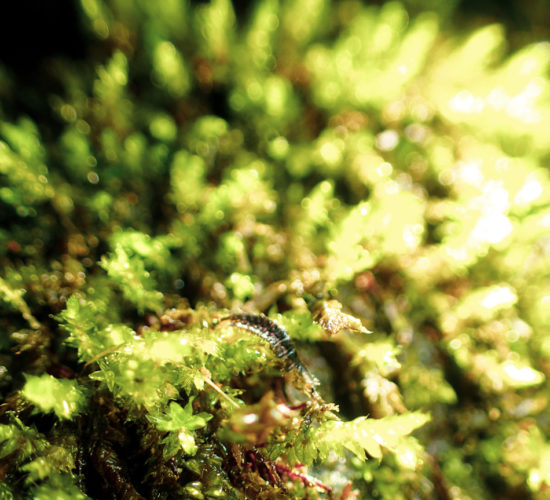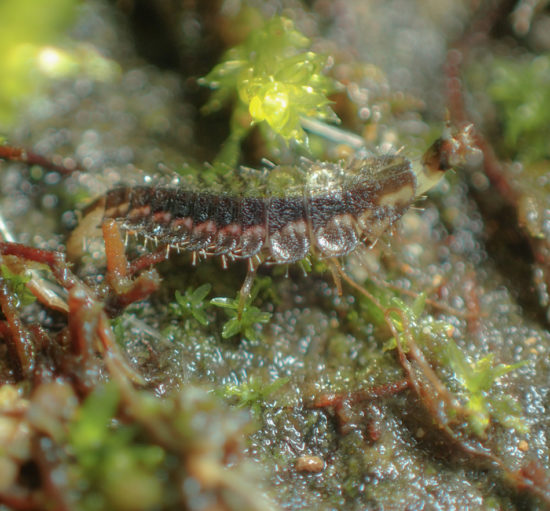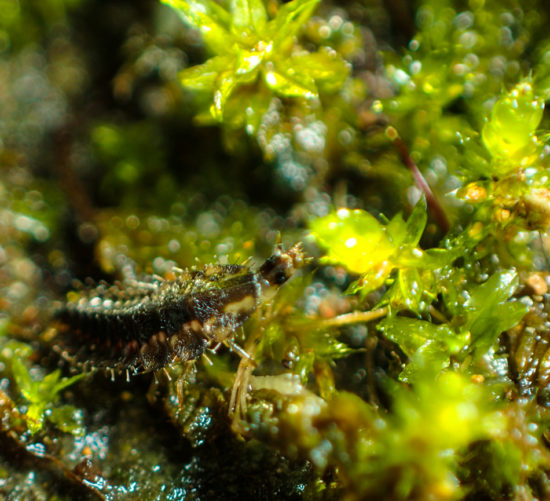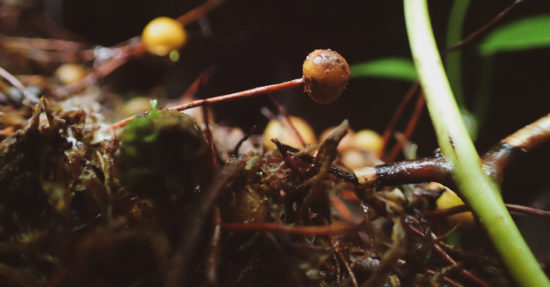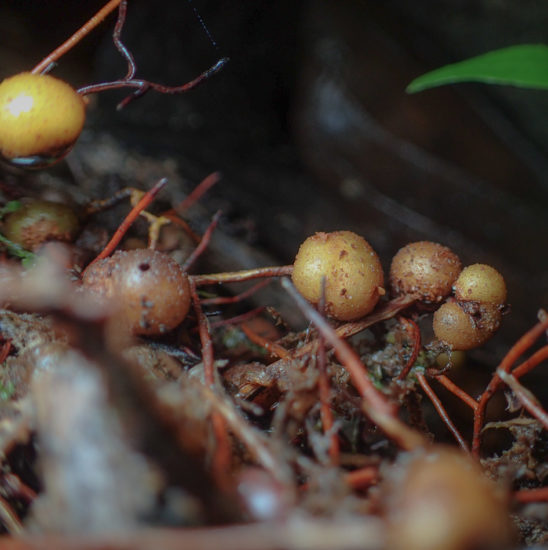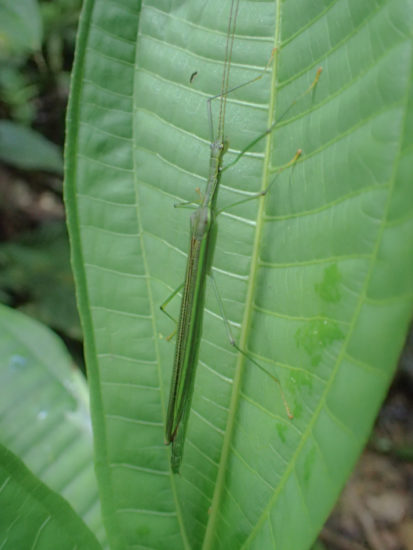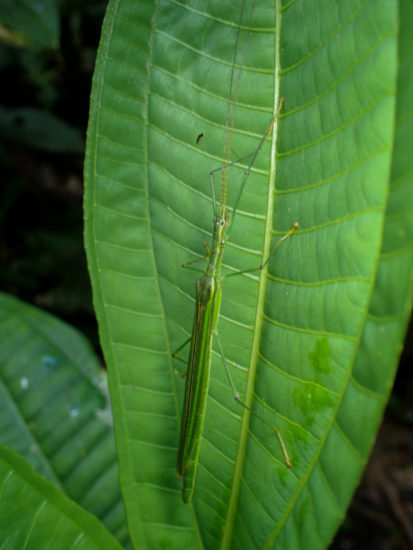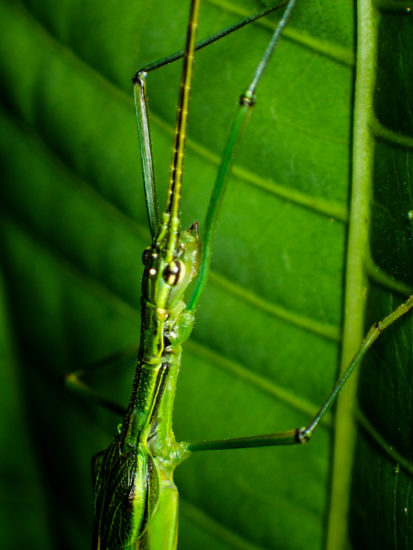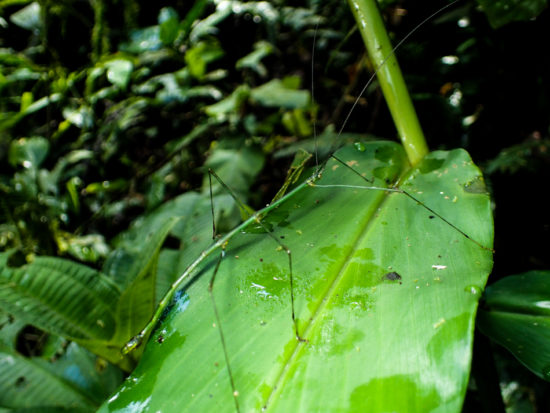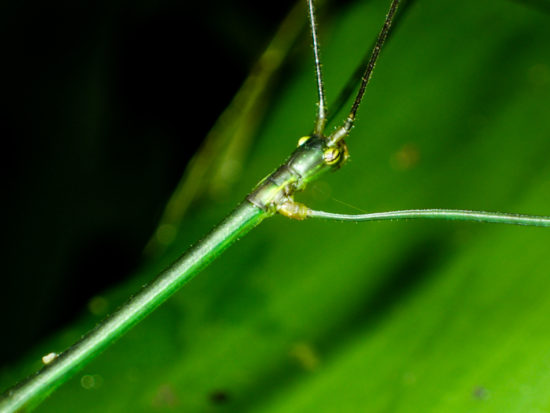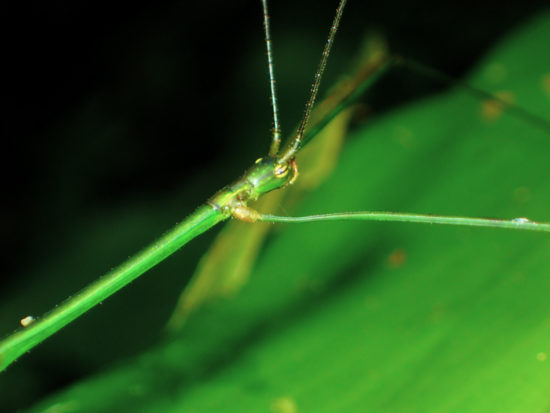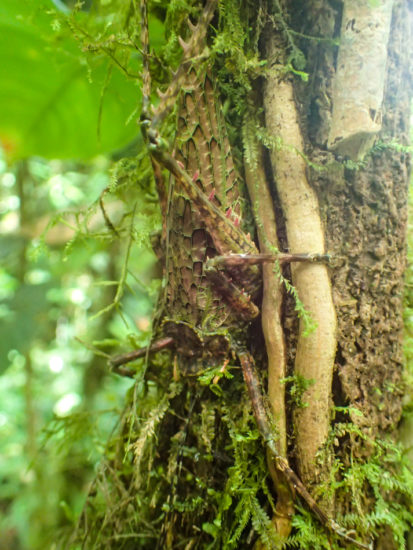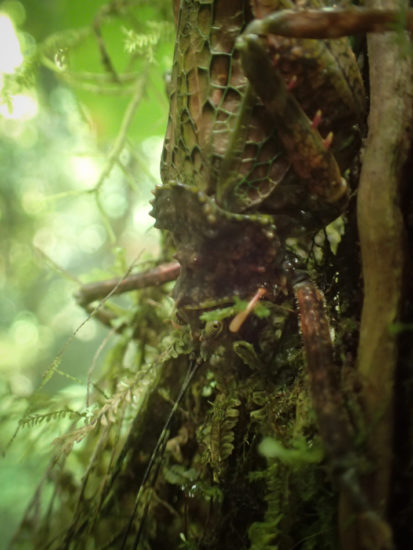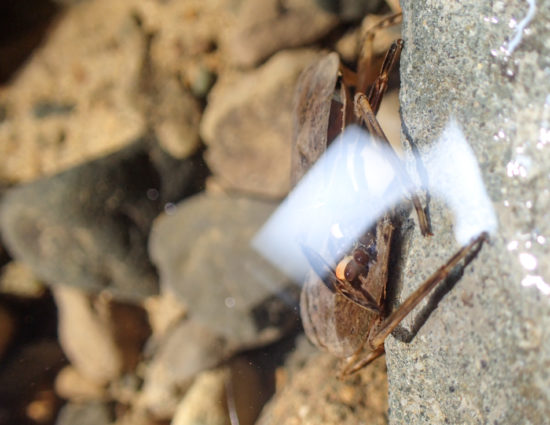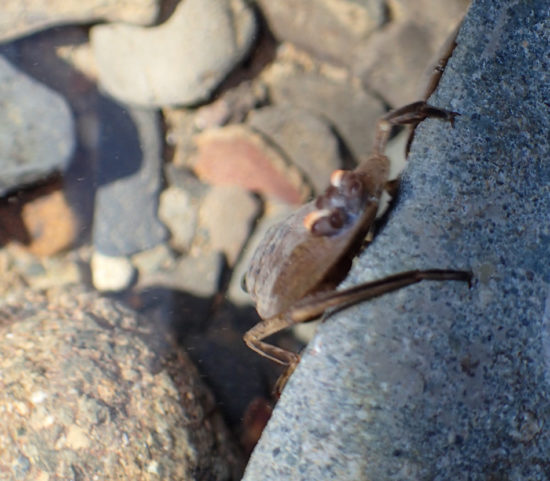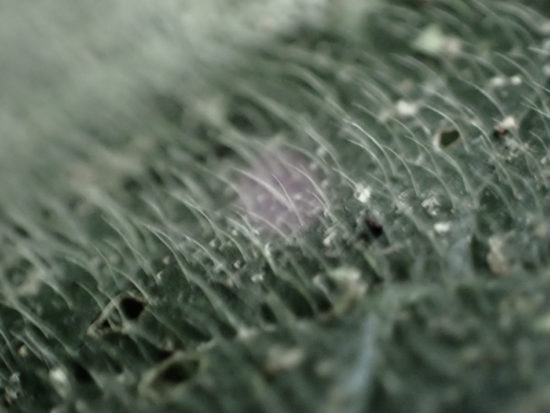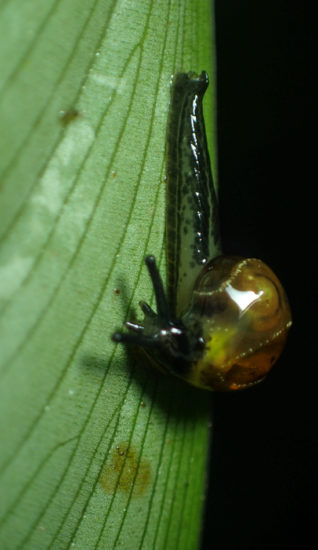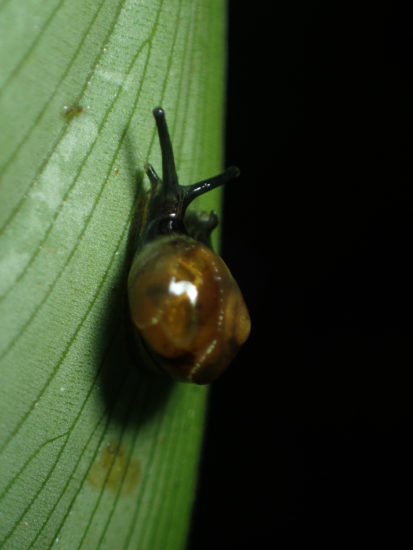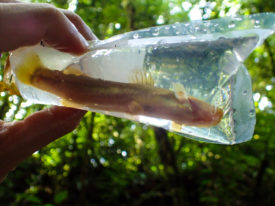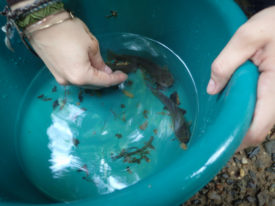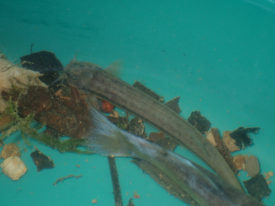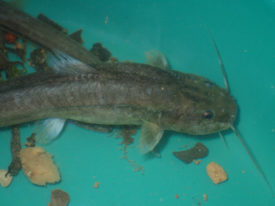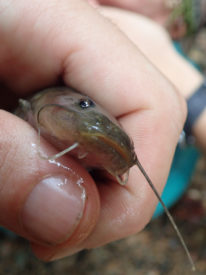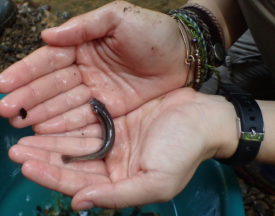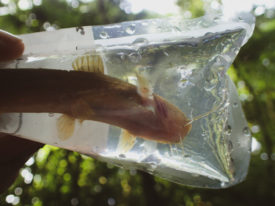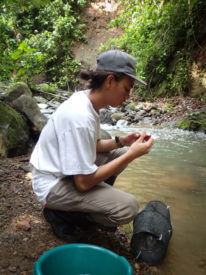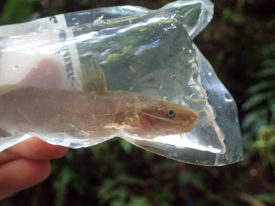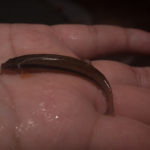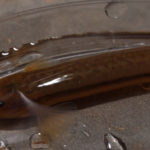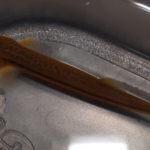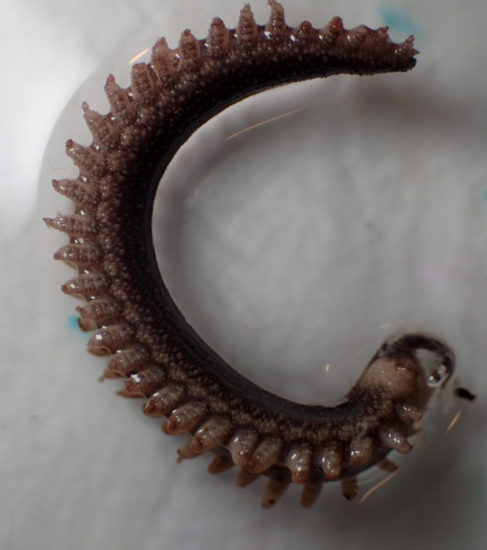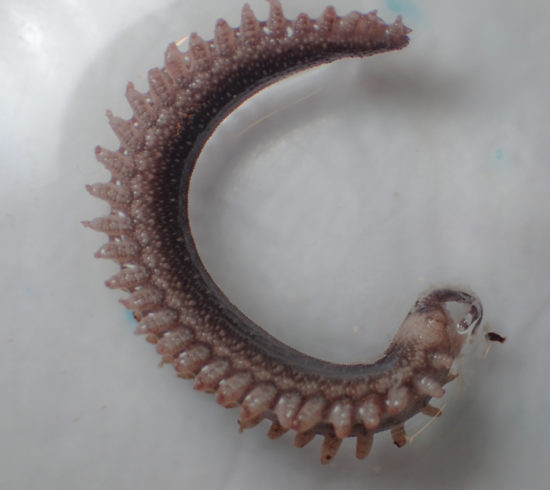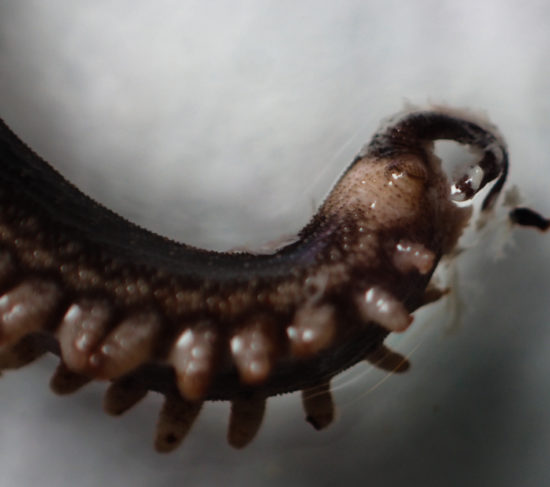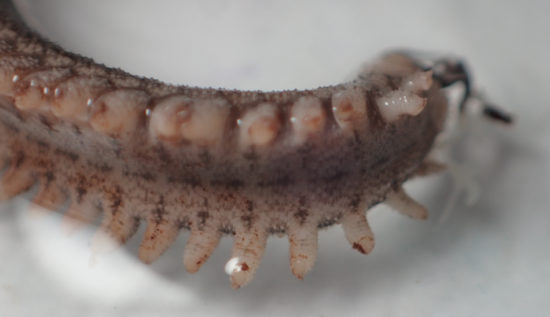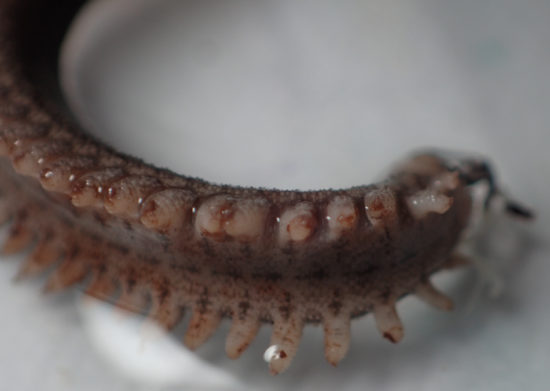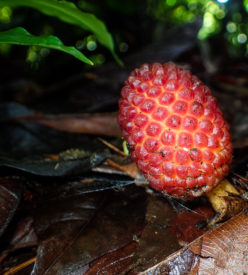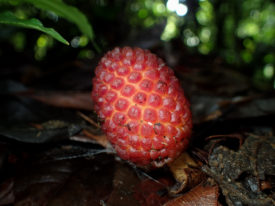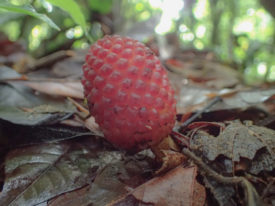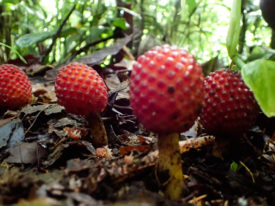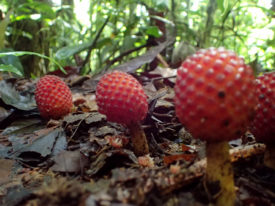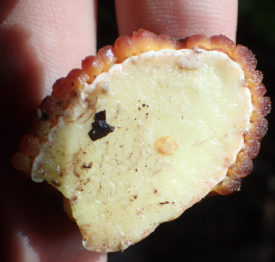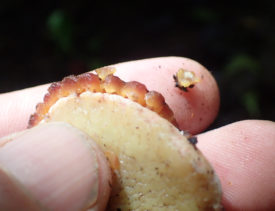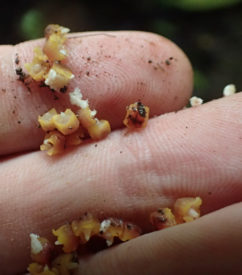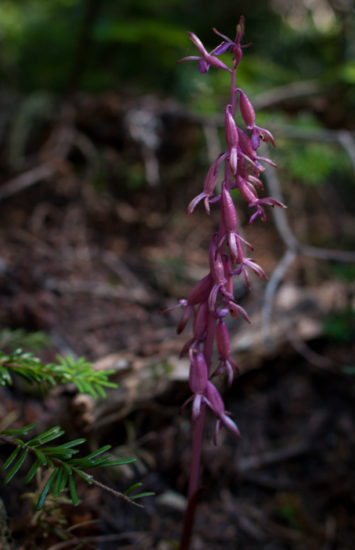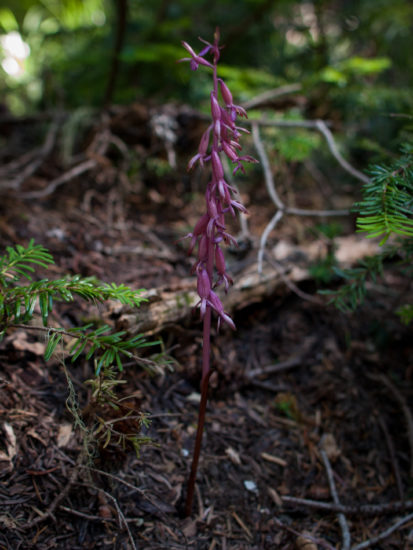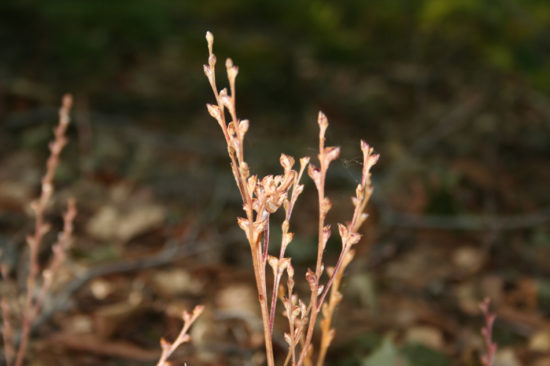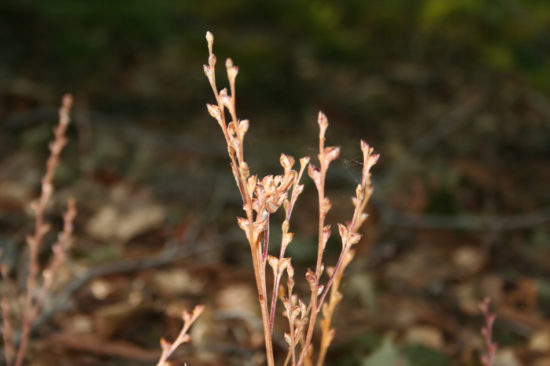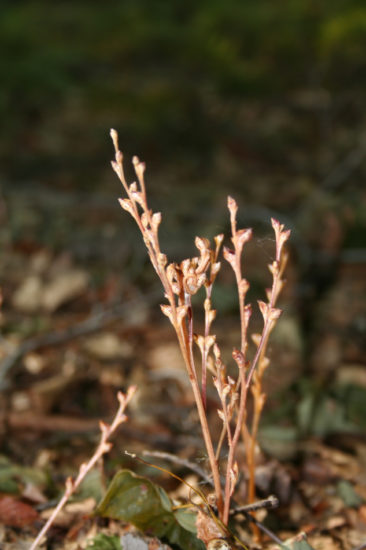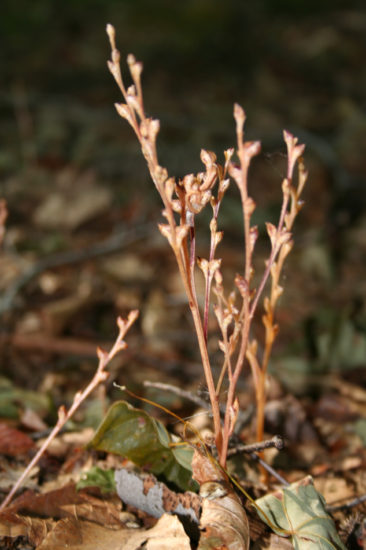Tag Archives: Costa Rica
Stick insect
Phasmatodea
Spot the katydid
Belastomatid laying eggs
Piper trichomes
Some more small snails
Long-whiskered catfish and Pencil catfish
Two catfish are distributed throughout Las Cruces streams. The long-whiskered catfish (Rhamdia rogersi) is present in Río Java and several small streams, including Quebrada Culvert and the upstream Quebrada Culebra. The other, the Pencil Catfish (Trichomycterus striatus), I have only caught in Río Java.
Here, minnow traps were used to collect crabs and both species of catfish were caught as by-catch.
Additionally, while we collected the pencil catfish in 2013 and subsequent years, it doesn’t look like I ever published any images—so here are a few old images of Trichomycterus.
Onycophora!
I’ve heard that onycophorans (Velvet worms) occur at Las Cruces, but I’ve never seen one. These organisms are likely sister to Arthropods—they have an outer cuticle that they shed to grow, are segmented, and many appendages with varying specialization… but their appendages aren’t articulated. They’re predators, shooting slime at prey and gnawing on them with a bizarre, circular mouth. Oddly, they also look cuddly—they’re like teddy bears with 50 legs!
This makes a new PHYLUM of animals for me. The specimen was found in a litter grab by Cristian and his students.
Parasitic plants!
Lining part of the water trail in Las Cruces, we discovered these strawberry-looking inflorescence from a Balanophoraceae, perhaps Helosis sp.—-a type of parasitic plant. The majority of the plant’s body is subterranean and parasitizes other plant roots. Tubercles on the stems grow into fruiting bodies likes those pictured here.
I introduce plants to my biology students with parasite plants to illustrate that not all plants are green things that “make their own food.” Instead, they’re a diverse group of multicellular eukaryotes characterized by a common (and complex) life cycle, a waxy cuticle, probably stomata for gas exchange, and almost certainly a unique common ancestry. Just look at the “distinguishing characteristics” of Balanophoraceae!
I’ve seen Western Coral Root (Corallorhiza maculata in Oregon), Indian Pipe (Monotropa uniflora in New York and Ohio), beech drop (Epifagus virginiana in Ohio), and mistletoes before—all parasitic groups. The Balanophoraceae (barnacle bodies) is the only family of plants I’ve seen that are all obligate parasites.
Voracious click beetle larvae
These elateridae larvae roam moss-covered boulders and banks of the streams in Las Cruces, mandibles wide-open and hunting prey. Not pictured, because I don’t have an appropriate camera with shutter control, is their glow. If you’re in the stream at night and turn off your headlamp, you’ll soon notice small green “stars” lining the banks—hundreds of them. These guys are bioluminescent!